Abstract
The therapeutic efficacy of zinc gluconate lozenge therapy in experimentally induced rhinovirus infection was assessed in two randomized controlled trials in susceptible adult volunteers. In trial 1, lozenges containing either zinc gluconate (23 mg of elemental zinc) or placebo were given 36 h after nasal inoculation of rhinovirus type 39 and administered eight times per day for 5 days. All of the volunteers had early cold symptoms at the time that treatment was begun. In trial 2, the same lozenge regimen was used, beginning 2 h after nasal inoculation with rhinovirus type 13, and continued for 7 days. Zinc therapy did not reduce the severity or duration of cold symptoms or the frequency or duration of viral shedding in either trial. Viral titers were measured in trial 2 and were shown to be unaffected by zinc therapy. Nasal mucus weights and the numbers of paper tissues used were slightly higher in zinc recipients. A statistically significant increase in levels of zinc in serum was documented in zinc recipients after 5 days of therapy. These data suggest that zinc gluconate lozenge therapy is not therapeutically useful in the treatment of rhinovirus colds.
Full text
PDF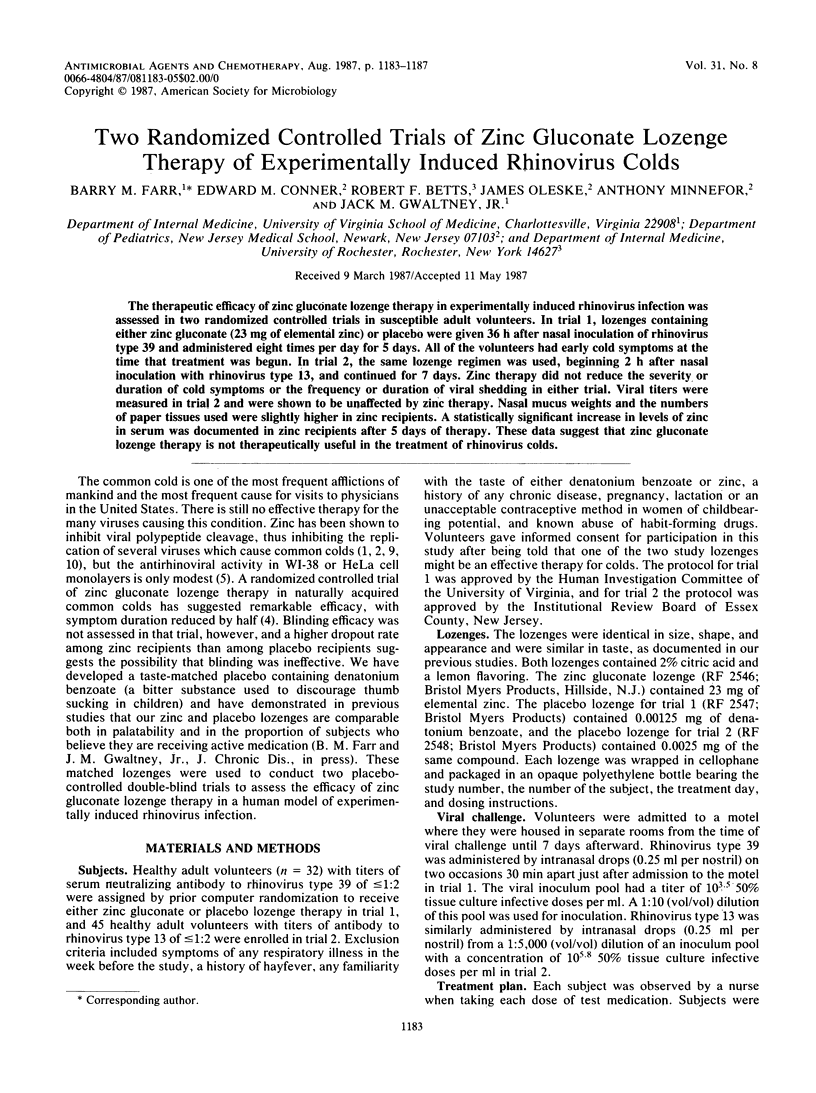
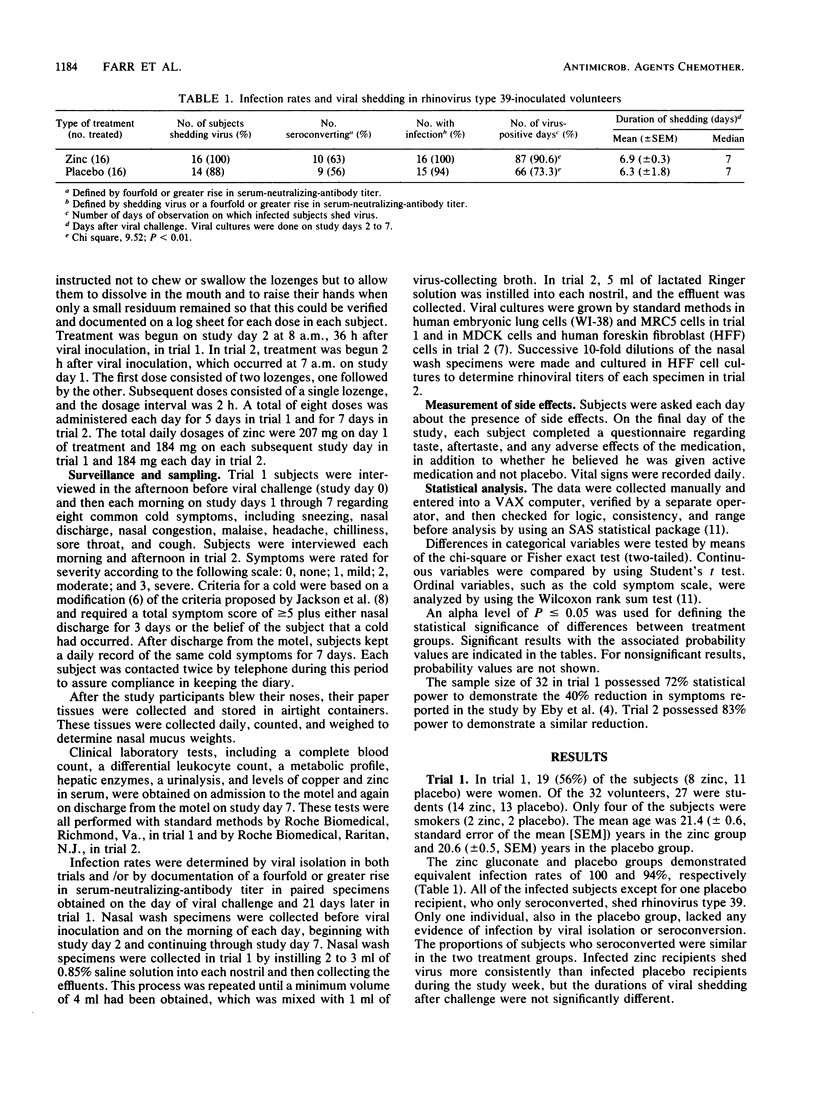
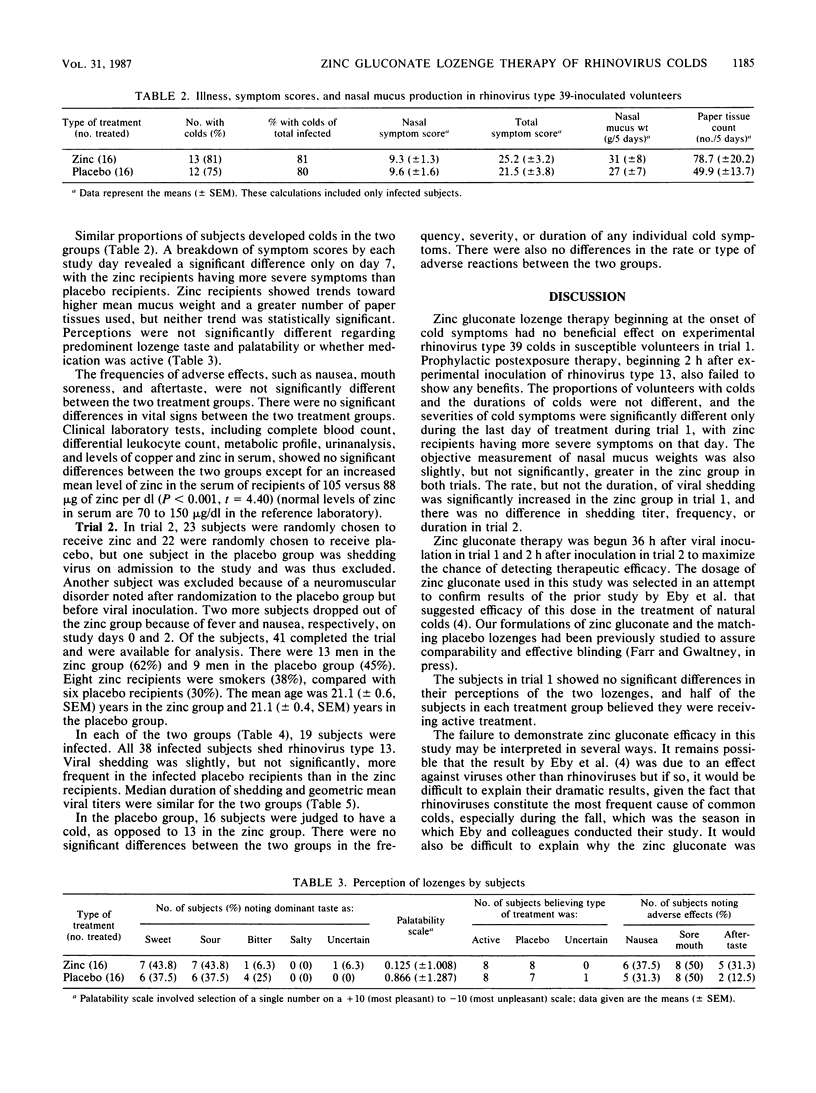
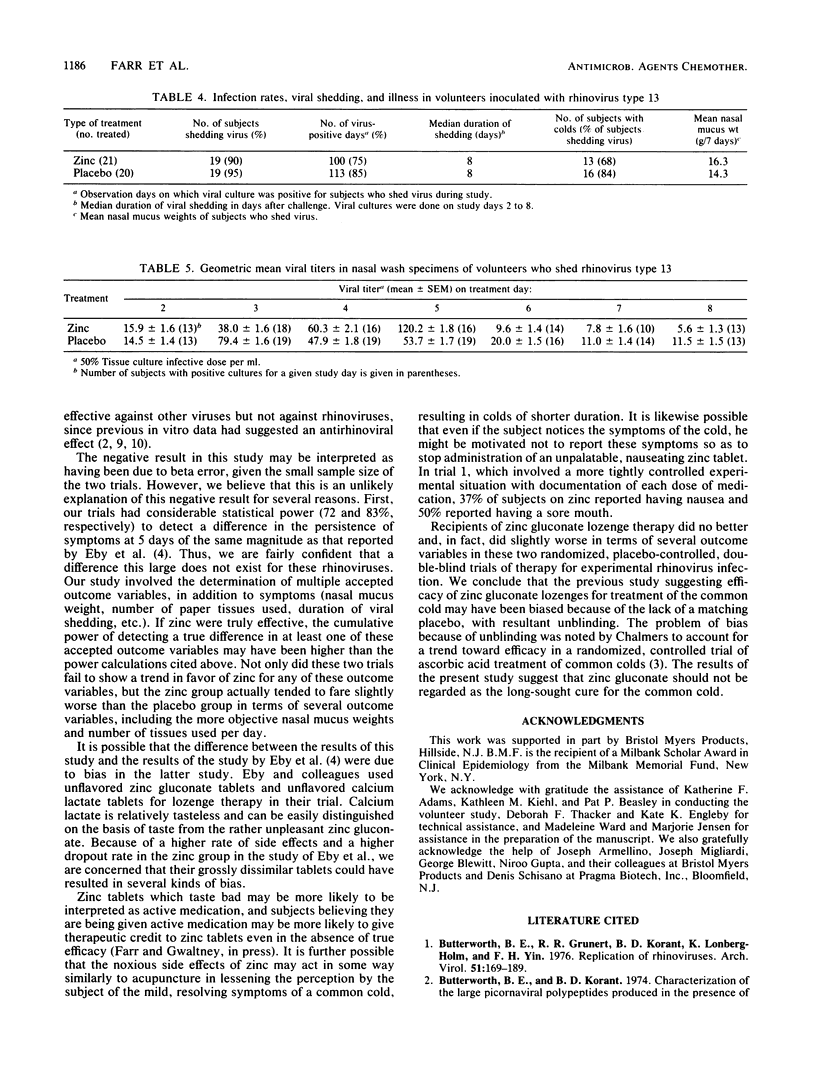
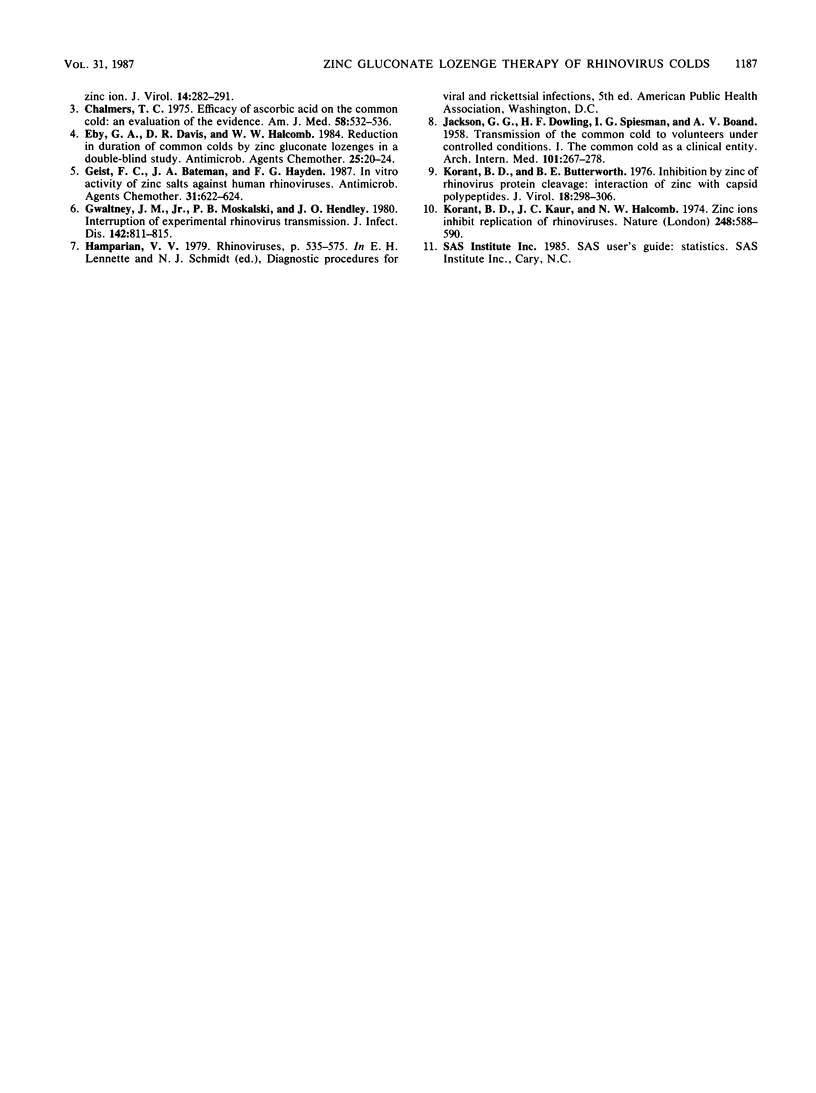
Selected References
These references are in PubMed. This may not be the complete list of references from this article.
- Butterworth B. E., Grunert R. R., Korant B. D., Lonberg-Holm K., Yin F. H. Replication of rhinoviruses. Arch Virol. 1976;51(3):169–189. doi: 10.1007/BF01318022. [DOI] [PubMed] [Google Scholar]
- Butterworth B. E., Korant B. D. Characterization of the large picornaviral polypeptides produced in the presence of zinc ion. J Virol. 1974 Aug;14(2):282–291. doi: 10.1128/jvi.14.2.282-291.1974. [DOI] [PMC free article] [PubMed] [Google Scholar]
- Chalmers T. C. Effects of ascorbic acid on the common cold. An evaluation of the evidence. Am J Med. 1975 Apr;58(4):532–536. doi: 10.1016/0002-9343(75)90127-8. [DOI] [PubMed] [Google Scholar]
- Eby G. A., Davis D. R., Halcomb W. W. Reduction in duration of common colds by zinc gluconate lozenges in a double-blind study. Antimicrob Agents Chemother. 1984 Jan;25(1):20–24. doi: 10.1128/aac.25.1.20. [DOI] [PMC free article] [PubMed] [Google Scholar]
- Geist F. C., Bateman J. A., Hayden F. G. In vitro activity of zinc salts against human rhinoviruses. Antimicrob Agents Chemother. 1987 Apr;31(4):622–624. doi: 10.1128/aac.31.4.622. [DOI] [PMC free article] [PubMed] [Google Scholar]
- Gwaltney J. M., Jr, Moskalski P. B., Hendley J. O. Interruption of experimental rhinovirus transmission. J Infect Dis. 1980 Dec;142(6):811–815. doi: 10.1093/infdis/142.6.811. [DOI] [PubMed] [Google Scholar]
- JACKSON G. G., DOWLING H. F., SPIESMAN I. G., BOAND A. V. Transmission of the common cold to volunteers under controlled conditions. I. The common cold as a clinical entity. AMA Arch Intern Med. 1958 Feb;101(2):267–278. doi: 10.1001/archinte.1958.00260140099015. [DOI] [PubMed] [Google Scholar]
- Korant B. D., Butterworth B. E. Inhibition by zinc of rhinovirus protein cleavage: interaction of zinc with capsid polypeptides. J Virol. 1976 Apr;18(1):298–306. doi: 10.1128/jvi.18.1.298-306.1976. [DOI] [PMC free article] [PubMed] [Google Scholar]
- Korant B. D., Kauer J. C., Butterworth B. E. Zinc ions inhibit replication of rhinoviruses. Nature. 1974 Apr 12;248(449):588–590. doi: 10.1038/248588a0. [DOI] [PubMed] [Google Scholar]


